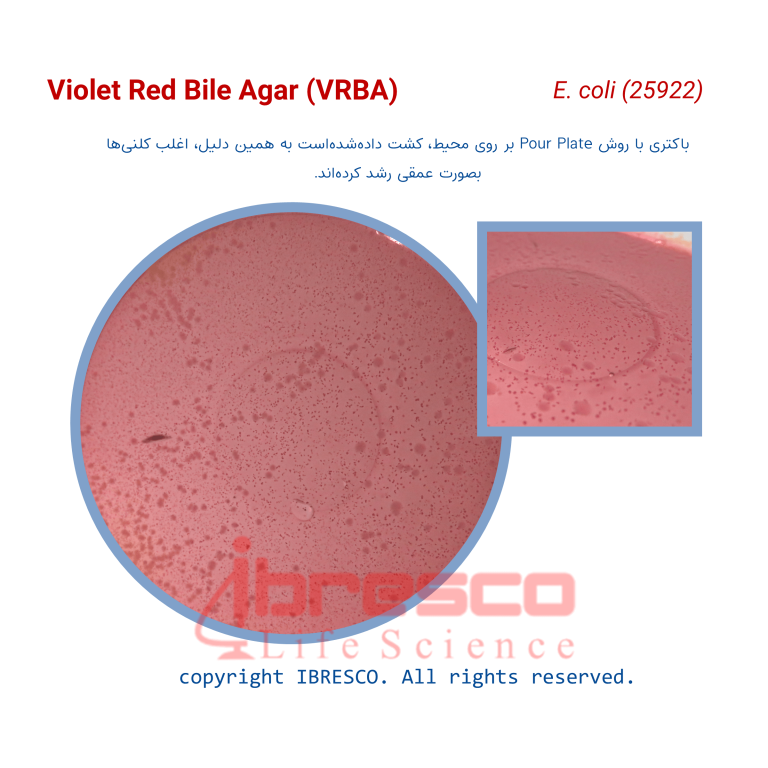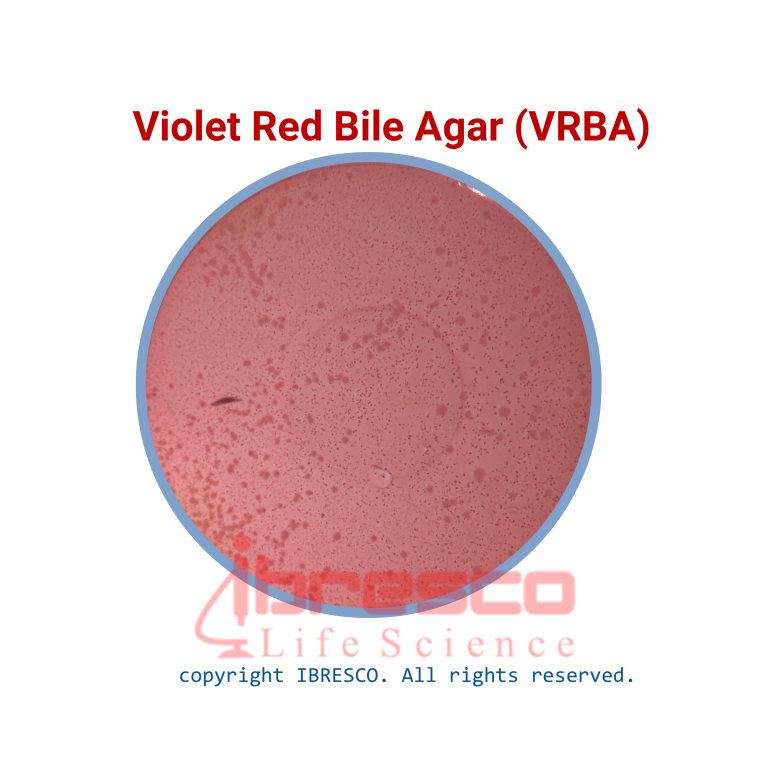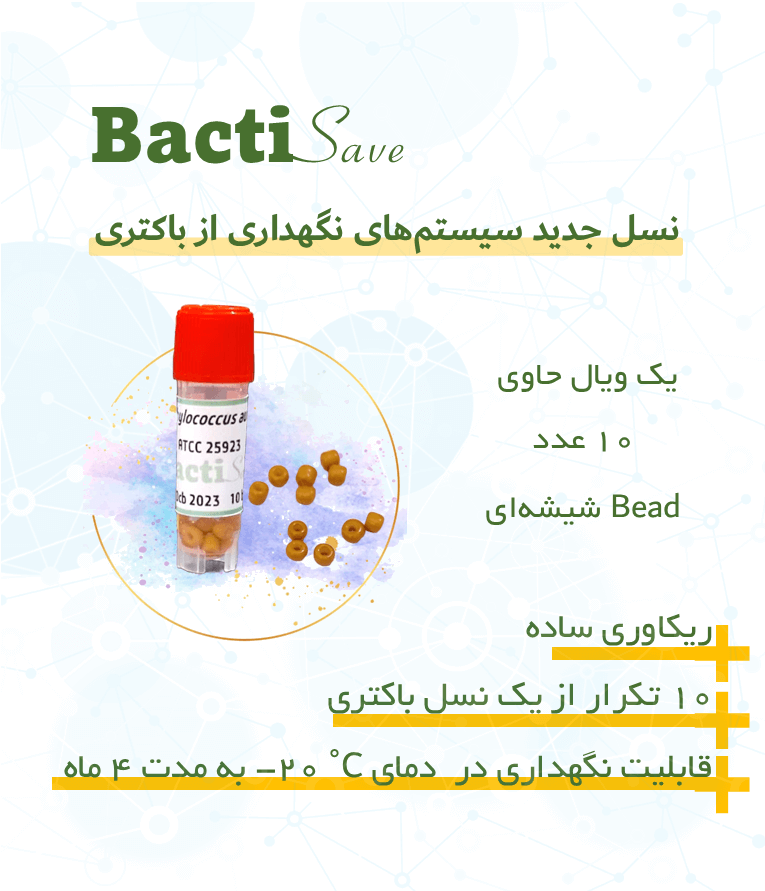توضیحات
Preparation
- Shake the container containing the powder of VRBA medium well. Dissolve 39.5 grams of the medium in 1 liter of distilled water.
- Heat it until boiling and completely dissolved. Do not heat the medium for more than 2 minutes, as this will reduce its supportive properties in growth.
- Do not autoclave the medium. Avoid overheating the medium.
- Cool the medium to 45-50 degrees Celsius and use it immediately.
STORAGE
The medium powder should be kept tightly closed and stored at temperatures below 30 degrees Celsius, and the medium should be stored at a temperature of 2-8 degrees Celsius. The best time to use is before the expiration date printed on the product label.
Test
Test
Test
- This medium is mostly used in the pour plate method, where 1 ml of the sample is poured into the plate. Then, 10 ml of the medium that has been boiled and cooled to 45-50°C is added to the plate.
- Rotate the plate to mix the sample and the culture medium well. Let the agar solidify well.
- After solidifying, heat it at 35-37°C for 18-24 hours. For dairy products, it is better to heat it at 30-31°C.
Results and Interpretation
Lactose-fermenting bacteria (including coliforms and E. coli) produce pink-red colonies with or without red precipitate zones around them.
Enterococci and possibly Klebsiella produce pink colonies with needle-like tips, while lactose-negative bacterial colonies will be colorless. Confirmatory tests should be performed to accurately identify the type of bacteria producing red colonies.
Note
- A cpver overlay can also be used to increase the specificity of the culture medium. This is done by adding a layer of molten medium on top of the solidified culture medium-sample mixture, which should be fully solid before incubating. The incubating temperature will depend on the type of microorganism being targeted.
- It is possible that VRBA medium may not completely prevent the growth of gram-positive microorganisms. Therefore, it is better to use gram staining and biochemical tests for the precise identification of the isolated colonies.
- In VRBA culture medium, in addition to Enterobacteriaceae, other gram-negative bacilli also grow. Biochemical tests should be used to accurately determine the species and strain of bacteria.
- Do not incubate the plates of this culture medium for more than 24 hours, as microorganisms that have not been able to grow in the medium during this time will start to grow.
- The best performance of this culture medium is achieved when it is prepared and used within 24 hours.






